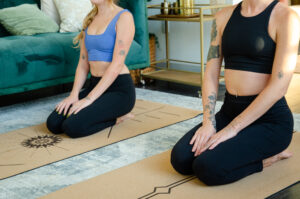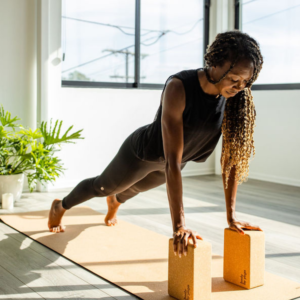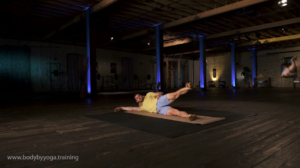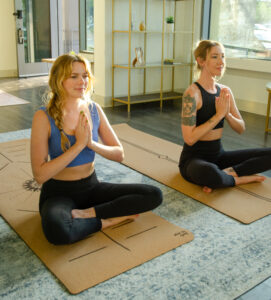How Often Should You Do Yoga? What You Should Consider When Creating a Practice Plan
- Updated on: July 8, 2022
Yoga is one of the oldest forms of exercise with a history dating back over 5000 years. Those who interested in beginning yoga usually have many questions about how to get started in building a practice, and one of those questions is usually, “How often should I practice yoga?” While there really is no “right” answer to that question, there are three other questions you should ask yourself when determining how much yoga is right for you:
- What are your goals?
- What style of yoga are you interested in?
- What are your physical limitations?
What are your goals?
There are many reasons why you may be setting out to begin a yoga practice, and there are varying degrees to which you can commit to the practice. After all, traditionally, yoga is a philosophy of connecting the mind, body and spirit and goes far beyond the asana or posture practice seen in the more Western version of yoga
Breathwork and Meditation
There is abundant research confirming that the breathwork and meditation that comes along with a yoga practice can reduce stress and minimize risk for certain chronic disease. If you are turning to yoga to improve mental or physical health, evidence shows you may start to see the benefits with just one 30-minute session of gentle yoga per week, and the improvement will increase with each additional session per week. Most experts agree that yoga is most beneficial when practiced three to five times per week for at least 30 minutes.
Building Strength
Yoga can also be a great way to build strength and muscle definition without the potentially damaging impact of weight training. If you are totally new to yoga and strength training, you might choose to start with three sessions per week and add on as your strength develops. If you are looking to replace traditional strength training with yoga in your existing training plan, you may find you are able to practice as many times per week as you would have done weight or resistance training.
Yoga styles like Ashtanga, Power and Vinyasa incorporate dynamic movement and challenging holds that encourage muscle development. Certain postures and balances can also combat the loss of bone density. While more frequency and intensity of practice can be beneficial for strength building, it is important to remember your body does need time to rest and recover. Overtraining of any kind could potentially lead to burnout or injury, so be aware of the cues your body is giving you.
Increasing Flexibility
If you are starting a yoga practice to work on your flexibility, there are a few factors that might help you decide how often you should be on the mat. Things like activity level, body structure, and age and gender can determine the limits to your mobility. If you a “naturally” flexible person you may find you can maintain with just one gentle yoga session per week. If you struggle with mobility, you may benefit from three to five sessions per week of Restorative or Yin Yoga, which focus on deeper stretching and muscle lengthening.

What type of yoga are you interested in?
If you are interested in a specific style of yoga, that style may provide some guidance as to how long and how often you should practice. Most beginners who are totally new to yoga tend to start with a gentle or Hatha style class. These classes are less physically demanding but still provide measurable health benefits. There is no minimum or maximum number of days of practice needed for it to be effective. However, it is important to note that too much stretching can create a state of hypermobility in some people. This can lead to joint pain or injury. It is important to pay attention to what is happening with your body to determine how much of this style of yoga is right for you.
Bikram Yoga
Many people enjoy the rigorous practice of Bikram yoga, which is a set sequence of 26 asanas performed in a room heated to 105 degrees with 40 percent humidity. It is not uncommon for seasoned yogis to practice Bikram daily for up to 90 minutes. Those who are interested in trying Bikram yoga for the first time should ease into the practice with two or three sessions per week. If you are totally new to yoga, it may be best to develop a practice in another style before trying Bikram. Regardless of how often you choose to practice Bikram, it is extremely important to maintain proper hydration.
Ashtanga Yoga
Ashtanga is another style of yoga that consists of a set sequence of challenging postures. Yogis who have dedicated themselves to a consistent Ashtanga practice may be practicing six days a week for 90 minutes, and there are six class sequences, or series, that can be practiced. Many who practice Ashtanga are devoted to following the “eight-limbed path” of yoga as outlined in the Yoga Sutras of Patanjali. These yogis strive to incorporate these basic tenets, one of which is asana, into their lives on and off the mat. Essentially, traditional Ashtanga yogis are practicing 24 hours a day, seven days a week.
However, it is possible to perform and enjoy this type of athletic yoga as a beginner and without strict adherence to the Yoga Sutras. The first series of Ashtanga, the Primary Series, is often broken down into half or quarter sessions to allow beginners the opportunity to build up to the entire 90-minute sequence. There is also no requirement to follow the spiritual guidance set forth in the Yoga Sutras. The asana practice of Ashtanga is physically and mentally challenging and can be extremely beneficial to those who practice less often or only occasionally.
Yoga is offered in many styles and has been adapted into many other types of physical fitness and hybrid classes. As when starting any new physical activity, consider what will be expected of your body in any particular yoga style and create a practice schedule you feel comfortable with.

What are your physical limitations?
Current Injuries and Rehabilitation
Yoga often comes highly recommended by medical professionals for patients who are recovering from a physical injury. Gentle, low-impact yoga can help increase range of motion while safely building back strength in the affected area. If you are looking to start a yoga practice to help with injury rehabilitation, it is important to talk with your care providers about how often you should be practicing. Additionally, you should always let your yoga instructor know of any active injuries prior to a class so they can offer modifications throughout the session.
Past Injuries or Surgeries
Your past experience with injuries or rehabilitation may also influence how often you choose to practice yoga and what style might best for you. If you have had any serious structural injuries in the past, like a shoulder or knee surgery, may want to ease into a regular practice to make sure your body can tolerate the movements. While yoga is a way to rehab injuries, too much stress in an area of weakness or imbalance could leave you susceptible to injury.
Injury Prevention
Though yoga is known for being safe and gentle on the body, injuries can sometimes occur during your practice, often as a result of repetitive movements. If you are practicing yoga multiple times per week, you may want to make sure your sessions are sequenced to spread focus throughout the entire body rather than one particular area. For instance, if your sequence has a lot of postures to strengthen the shoulders, perhaps the in next session you might choose to focus on strengthening the lower body.
The key takeaway when considering how often you should do yoga is that your body is the determining factor, and each individual experience is different. As long as you pay attention to the signs your body is giving you and maintain open communication with your instructors and any relevant care providers, you will be headed in the right direction for successfully building your practice.

Recent Posts
Categories
Related Articles

Breathing technique to improve your yoga practice

Restorative Yoga Stretches

Benefits of yoga before bed

Taking the next step to more challenging yoga
Related Articles

Stretching and Strengthening your hips
In this workout we start slow to warm up your hips. Utilizing low impact workouts like this can be important for beginners and yoga veterans

Hatha vs Power yoga
We’ve created our own unique style of slow burn power yoga that combines Hatha yoga, power yoga, bodyweight exercises and physical therapy. This way in

The importance of maintaining correct alignment
Everything in your body is connected, so when one muscle isnt aligned properly it can be a slippery slope to injury. Building a solid foundation
